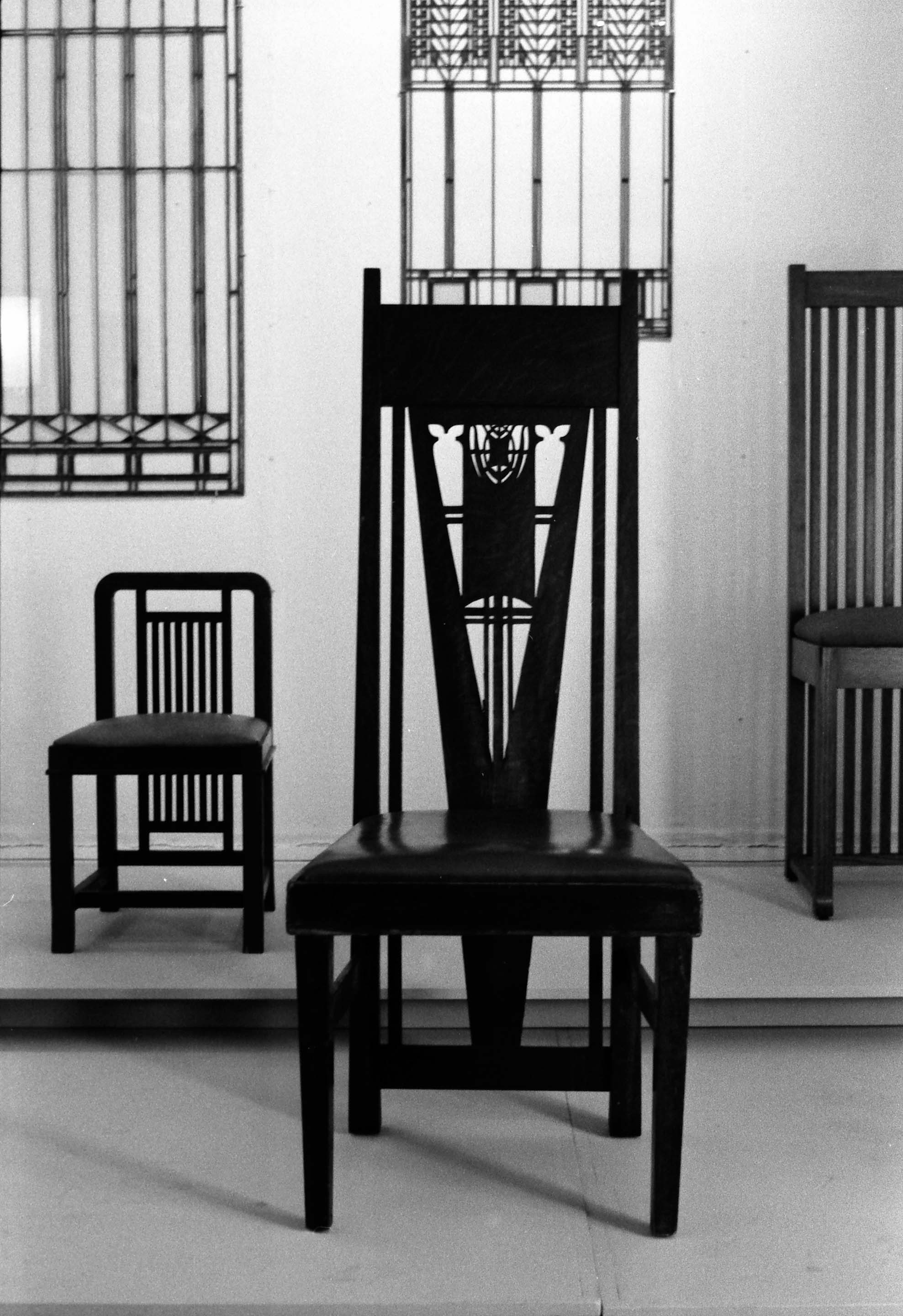- Prairie School Furniture

Prairie School Furniture, Installation View, 1972.

Prairie School Furniture, Installation View, 1972.

George Grant, Elmslie Andiron, 1912.

Prairie School Furniture, Installation View, 1972.

Frank Lloyd Wright, Side Chair, 1909.
From the press release:
The Prairie School of Architecture developed from the innovative designs of Louis Sullivan and Frank Lloyd Wright and encompassed the period from 1900 until the First World War, which is the period covered by the exhibition. Some earlier designs demonstrating the links between the Prairie architects and Sullivan will be included. The Prairie School style continued after the War into the Twenties, but it never again achieved the heights of the pre-1914 period.
An integral part of the interior of a Prairie house was the furniture designed specifically for it. The architects envisioned a “total architecture” in which all aspects of the building—landscape, architecture, furniture, rugs, draperies, light fixtures—formed a unified whole, or in today’s usage, an environment. The architecture of the Prairie School, particularly that of Frank Lloyd Wright, is well known and revered, but the innovative interior furnishings have largely been neglected. It is the purpose of the exhibition to make this less known aspect of the Prairie style visible to the public, who, in most cases, are unable to see actual interior furnishings since these are still in private residences. Photographs of interiors showing furniture in place will also be exhibited.
Just as each architect associated with the Prairie School had a personal style of architecture, so the furniture of each revealed individual characteristics. The exhibition will offer an opportunity to compare the styles of three important Prairie School architects in microcosm.
This exhibition was held simultaneously with a course and seminar on the Prairie School given by Paul Sprague, Professor in the Department of Art History at the University of Chicago.